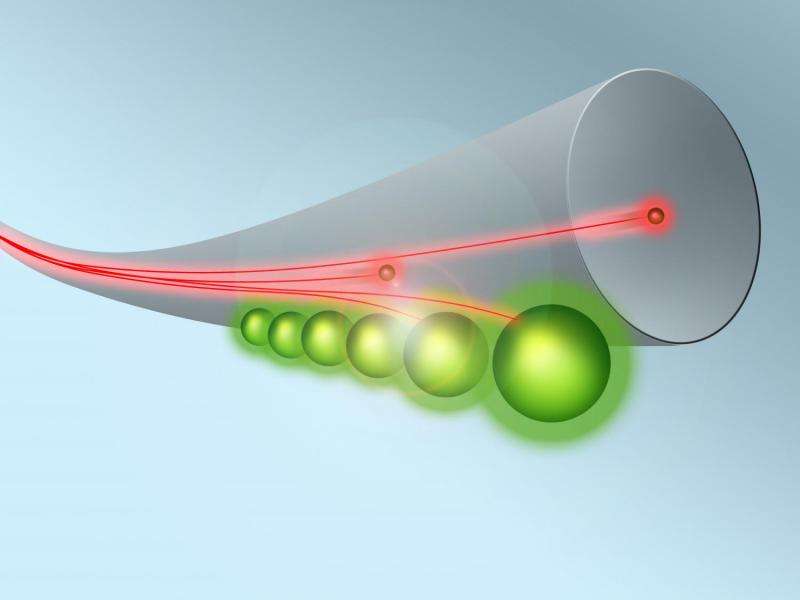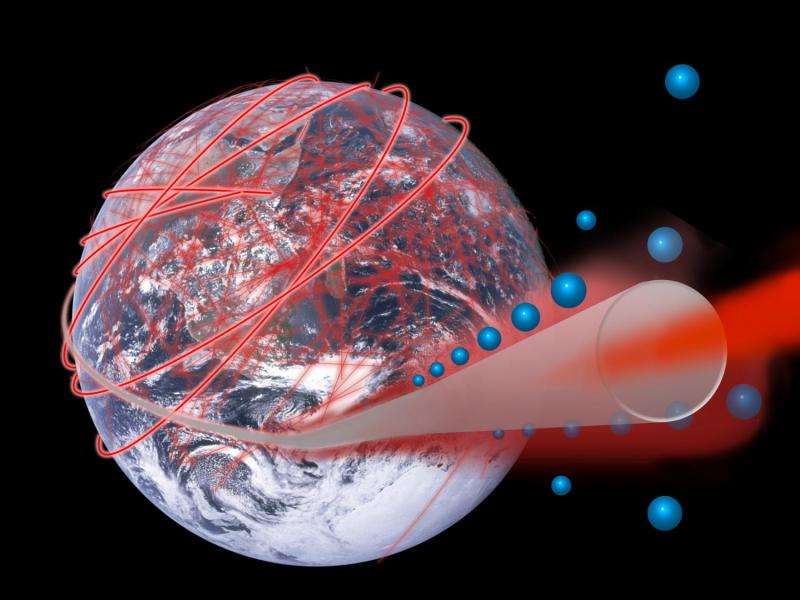Glass fiber that brings light to standstill

Light is an extremely useful tool for quantum communication, but it has one major disadvantage: it usually travels at the speed of light and cannot be kept in place. A team of scientists at the Vienna University of Technology has now demonstrated that this problem can be solved - not only in strange, unusual quantum systems, but in the glass fiber networks we are already using today.
By coupling atoms to glass fibers light was slowed down to a speed of 180 km/h. The team even managed to bring the light to a complete stop and to retrieve it again later. This technology is an important prerequisite for a future glassfiber-based quantum-internet, in which quantum information can be teleported over great distances.
Light Pulses, Slower than an Express Train
In a vacuum, the speed of light is always the same - approximately 300 million meters per second. When light is sent through a medium such as glass or water, it is slowed down a little bit due to its interaction with the material. "In our system, this effect is extreme, because we are creating an exceedingly strong interaction between light and matter", says Professor Arno Rauschenbeutel (TU Wien / Vienna Center for Quantum Science and Technology). "The speed of light in our glass fiber is only 180 kilometers per hour. Any express train can top that."
Quantum Communication in Existing Fiber Networks
"There are different ways of quantum mechanically transferring information", says Clément Sayrin. "Glass fiber technology is a particularly attractive option - after all, a worldwide glass fiber net already exists, and we are already using it to transmit data."

At the TU Wien, cesium atoms are coupled to an ultrathin glass fiber. When the atom absorbs laser light it can pass from a state of low energy to a state of higher energy - provided that the energy of the absorbed photon matches the energy difference between the two states. This light, however, cannot be retrieved in a controlled way.
That is why the Viennese team used an additional control-laser in their experiment, which couples the high-energy state to a third atomic state. "The interplay between these three quantum states prevents the photon from just being absorbed and randomly emitted. Instead, the photon's quantum information is transferred to an ensemble of atoms in a controlled way, and it can be stored there for some time." The photon is turned into a collective excitation of atoms.
After two microseconds, a period of time in which the light would normally have travelled about half a kilometre, the control laser was used to prompt the atoms to emit the light back into the glass fiber. The properties of the photon stay exactly the same - an important prerequisite for quantum communication.
Being able to store photons is an important technological step towards quantum communication over great distances. "Quantum physics allows us to create a connection between sender and receiver, which makes eavesdropping impossible", says Arno Rauschenbeutel. "The fundamental laws of quantum physics make sure that no one can tap the connection without being noticed."
Provided by Vienna University of Technology





















